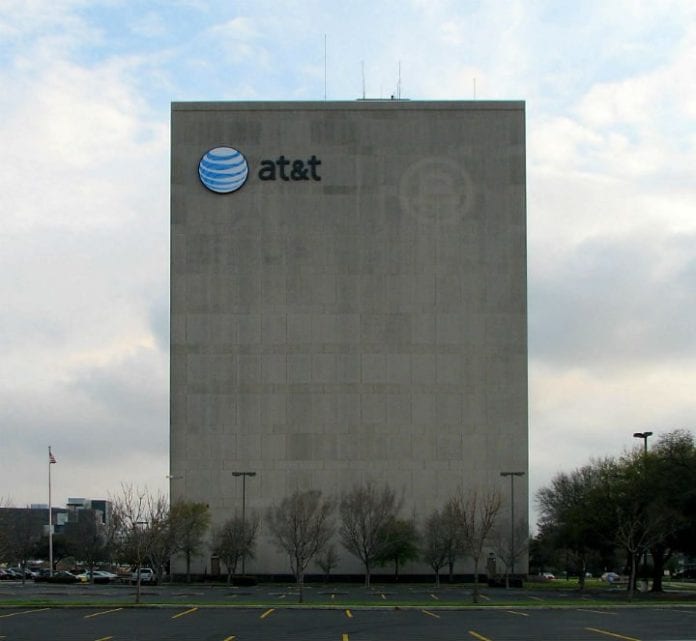In a touted industry first, AT&T said it has begun a 5G technology trial using millimeter wave spectrum at Intel offices in Austin, Texas.
AT&T’s “5G” technology push took a significant step this week as the carrier said it launched the first U.S. business customer trial using millimeter wave spectrum. The trial is being conducted at one of Intel’s offices in Austin, Texas.
The telecom giant said the program is using the 15 GHz and 28 GHz spectrum bands to provide connection speeds in excess of 1 gigabit per second in support of multiple enterprise proof-of-concept use cases. Those include internet access, virtual private network, unified communications application, 4K video streaming and what AT&T is calling 5G voice over internet protocol.
The move is also building on recent work with Ericsson, which included a public demonstration last month in Austin of various technologies expected to form a basis for planned 5G services. Those included eight-carrier single-user multiple-input/multiple-output system capable of gigabit per second throughput, with posted peak speeds of up to 14 Gbps.
“This trial is a significant step forward,” explained Rick Hubbard, SVP for network product management at AT&T, in a statement. “We’re leaving the lab and heading into the field with a real-world business customer. We expect millimeter wave technology to be an important part of 5G. The trial will help accelerate our 5G work by shedding new light on how the technology acts in a business environment.”
AT&T earlier this year filed paperwork with the Federal Communications Commission seeking an experimental license to conduct technology trials using spectrum in the 3.4-3.6 GHz, 3.7-4.2 GHz, 14.5-15.35 GHz and 27.5-28.5 GHz bands. Initial testing showed network speeds in excess of 10 Gbps.
The trial also ratchets up the “competition” between AT&T and Verizon Communications in their quest for leadership in the 5G space. AT&T had initially downplayed Verizon’s initial comments to begin technology trials this year, which Verizon made at last year’s CTIA trade show.
The two have more recently been at the center of a standards battle being played out at the Third Generation Partnership Project over timing of initial 5G standards.
Millimeter wave spectrum is expected to be a significant part of planned 5G network deployments due to the wide spectrum swaths available in those bands seen as critical to supporting 5G use cases. A handful of domestic rivals, including Verizon, T-Mobile US, Sprint, U.S. Cellular and C Spire, have all announced planned trials of 5G technology using millimeter wave spectrum.
The Federal Communications Commission as part of its Spectrum Frontiers proposal is looking to unlock 3.85 gigahertz of spectrum for licensed use in the 28 GHz, 37 GHz and 39 GHz bands, and 7 gigahertz for unlicensed use across the 64 GHz to 71 GHz bands in support of 5G plans.
Millimeter wave questions remain
Despite the robust support, some analysts are questioning the business model behind the use of millimeter wave spectrum. Research firm Mobile Experts recently released a case study on broadband-based 5G services focused on return on investment for deployments, noting current technology tied to the limited propagation characteristics of the 28 GHz band come up short in terms of supporting a business case.
The firm said it calculated the potential ROI for operators investing in a pre-5G network using the 28 GHz band compared with LTE costs and “the potential costs for a sub-6 GHz network using 5G technology,” and found at “historical prices, 5G will not be successful.” To reach the necessary ROI, Mobile Experts said the market would need inexpensive access to large spectrum blocks.
“The business case for 5G fixed broadband is not a slam dunk,” said Joe Madden, principal analyst at Mobile Experts. “We expect pre-5G deployment to be a very targeted investment by mobile operators, addressing very specific neighborhoods instead of nationwide deployment.”
Madden noted millimeter wave links at 50 meters created a “challenge to the business case, because the number of customers served by each radio will be too small.” The firm noted links of at least 200 meters would be required to reach enough users to support sufficient ROI.
“Link distance is a key factor in the pre-5G business case at 28 GHz,” Madden explained. “We’ve conducted some in-depth link budget calculations and compared our results to trial results reported by Samsung, Ericsson, Intel and others. Based on this deep technical work, we have some concerns about the power, linearity and heat dissipation in pre-5G infrastructure. The laws of physics will limit these pre-5G networks.”
Mobile Experts noted the 28 GHz band and fixed wireless broadband services will be a starting point, “but a combination of low-band and high-band spectrum will be important to reach mobile gigabit performance.”
Carriers have acknowledged the challenges of high-band spectrum for commercial wireless services.
“If you put a hand in front of a transmitter you will see degradation of performance,” said Thomas Keathley, SVP of wireless network architecture and design at AT&T, during a panel discussion at the recent CTIA Super Mobility event. “It’s going to be a very different implementation than traditional cellular networks.”
Adam Koeppe, VP of access technology planning at Verizon, noted that indeed propagation characteristics of high-band spectrum will be a challenge, but those “issues are not anything new.” Instead he noted what is different is the use of beamforming and beamtracking technology that allows the use of those bands in access-type deployments.
“Our trials have been to take those out of the lab and into real world scenarios,” Koeppe said of the carrier’s 5G network trials.
Bored? Why not follow me on Twitter.

